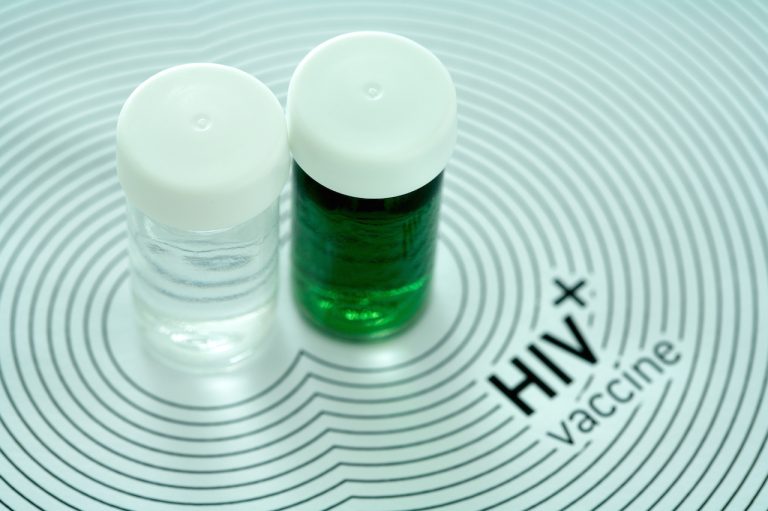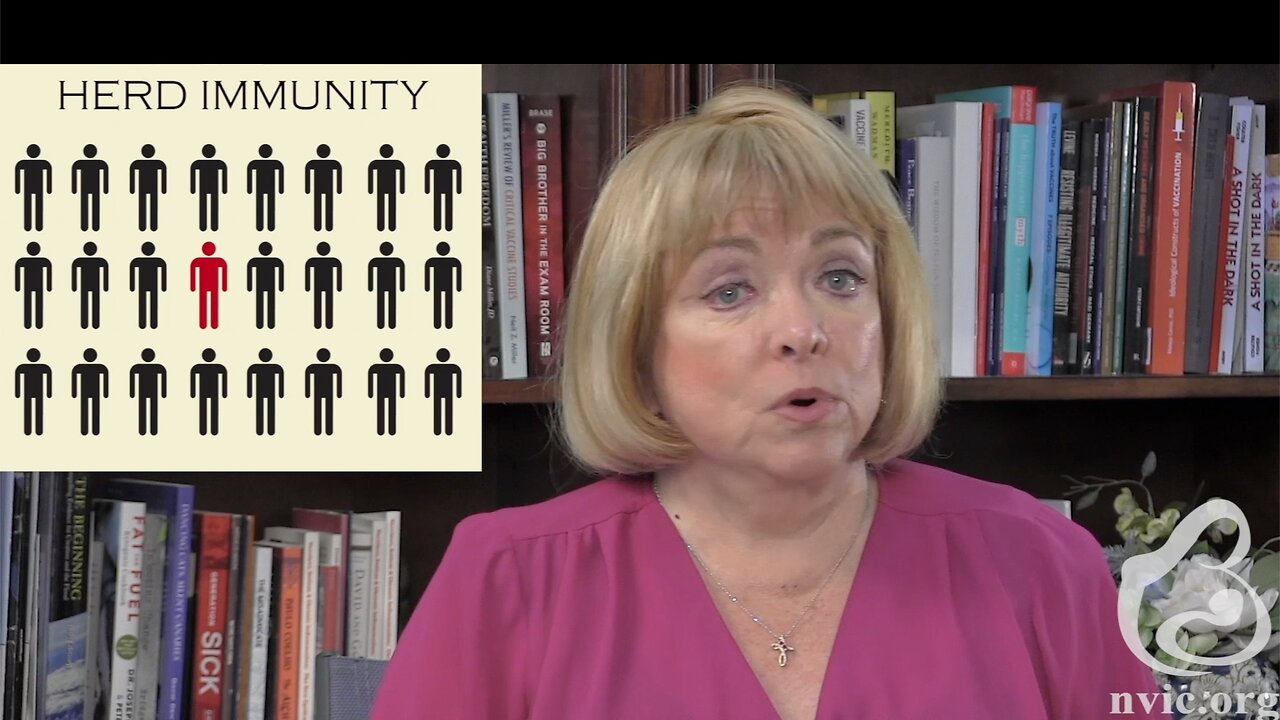Story Highlights
- NIH, in collaboration with Johnson & Johnson, will begin HIV vaccine efficacy trials on humans in August 2019 in the U.S.
- Another HIV vaccine candidate, using a live attenuated herpes cytomegalovirus (CMV), is also nearing clinical trials in humans.
- There are serious safety concerns regarding live attenuated vaccines and numerous cases reported in the medical literature of vaccine strain infection and transmission.
The U.S. National Institutes of Health (NIH) has announced that it will launch its Phase 3 Human Immunodeficiency Virus (HIV) efficacy trial on humans at 55 clinical research sites in the United States, Mexico, South America and Europe. The trial, called HPX3002/HVTN 706 or Mosaico, will assess whether or not the experimental HIV vaccine designed to trigger an immune response against a range of HIV strains can safely and effectively prevent HIV among men who have sex with men and transgendered individuals.1 2 3
Mosaico, the third HIV vaccine trial in progress globally, is sponsored by Janssen Vaccines & Prevention BV, which is part of Janssen Pharmaceutical Companies of Johnson & Johnson. NIH’s National Institute of Allergy and Infectious Diseases (NIAID) and U.S. Army Medical Research and Development Command (USAMRDC) also funded the trial. Researchers at the HIV Vaccine Trials Network (HVTN) located at the Fred Hutchsinson Cancer Research Center in Seattle, Washington will be conducting the study.1
The Bill and Melinda Gates Foundation also partners with U.S. federal agencies to fund HIV/AIDS vaccine development and clinical trials. 4
According to an NIH news release, Phase 3 of the clinical trial will involve 3,800 men and transgendered individuals who are HIV negative between the ages of 18 and 60 who have sex with men and/or transgender people. The study is expected to launch for open enrollment in August 2019. The reason this specific population is chosen as the sample for the study is because men who have sex with men and transgender people are disproportionately affected by HIV in the United States and Europe. In the United States, homosexual and bisexual men account for two thirds of new HIV cases despite representing only four percent of the total U.S. population.1
All participants will be given a comprehensive HIV prevention package, including access to pre-exposure prophylaxis (antiretroviral drugs to reduce risk of contracting HIV). Participants will randomly be given either the experimental vaccine or a placebo. The experimental vaccine is made up four doses of Ad26.Mos4.HIV, a vaccine that uses an engineered common-cold virus that is believed not to cause illness (adenovirus serotype 26) to deliver four mosaic immunogens. The doses will be given four times over a one-year period. The last two doses will be given together with a bivalent (two-component) HIV envelope protein formulation.1
Historically, there have been major challenges to developing a vaccine to prevent HIV, a viral infection that has been associated with the development of Acquired Immune Deficiency Syndrome (AIDS). Not only does the diversity of HIV strains pose a problem to creating a vaccine but also reservoirs of the virus can accumulate within certain cells and go undetected by the immune system. According to news reports, Johnson & Johnson’s experimental HIV vaccine has provided protection against HIV infection in nearly two-thirds of tested animals.5
Bruce Walker, director of the Ragon Institute, which is affiliated with Harvard University and Massachusetts Institute of Technology and focuses on immune approaches to disease stated, “It’s measurably better in animal studies than other vaccines tested thus far.” He adds, “The real questions are: Will it be protective? What percentage of people will be protected? And what will be the durability of the protection?”5
Another HIV Vaccine Containing An Attenuated Virus Nears Clinical Trials
In addition to the Mosaico trial, there is another HIV vaccine candidate that has been developed at the Oregon Health and Sciences University and licensed by Vir Biotechnology in California with funding from the Bill & Melinda Gates Foundation, which is almost ready to move on to clinical trials in humans.6 A study published in July 2019 describes an experimental vaccine that uses a live attenuated (weakened) form of the common herpes virus cytomegalovirus (CMV) for production.7 The original non-attenuated vaccine could not be used in humans as CMV can cause serious infections in humans, particularly in pregnant women or those with weakened immune systems.8
The new live attenuated HIV vaccine has shown to eliminate simian immunodeficiency virus (SIV), which is the monkey virus that causes symptoms in monkeys similar to symptoms of HIV in humans, in 59 percent of vaccinated rhesus macaque monkeys. These results are said to be similar to findings from earlier studies using the vaccine’s original non-attenuated version. The immunity generated by the attenuated vaccine is considered to be long lasting since nine of 12 vaccinated monkeys could still fight off SIV infection three years later.7
According to Klaus Früh, PhD, a co-author of the study, “This research, using rhesus CMV, provides potentially important insights into the design of a human CMV-based HIV vaccine.” He adds, “We significantly attenuated CMV and still got the same type of immune responses as with the wild version of this vaccine.”7
Another co-author Louis Picker, MD, states, “These papers are important because they recapitulate the previously reported unique CMV vector efficacy with a genetically modified vector that is highly attenuated and therefore potentially safer for clinical use.”8
Safety Concerns Using Live Attenuated Vaccines
Theoretically, live attenuated vaccines (LAV), including for smallpox, polio (OPV), measles, mumps, rubella, influenza, rotavirus, varicella and herpes zoster are considered to be safe since the live virus is weakened. Vaccinologists maintain that live attenuated viral vaccines elicit stronger and longer lasting immune responses than inactivated vaccines, even though the attenuation process is unpredictable and, sometimes, the attenuated vaccine strain viruses revert to a virulent form.9
According to a report published in Nature Biotechnology:
In the present regulatory environment the use of LAVs has also been limited by safety concerns, including reversion to wild-type virulence. Because LAVs are shed from vaccinees, they sometimes present a risk to unvaccinated individuals with impaired immunity.
There have been many cases of vaccine strain infection and transmission reported in the medical literature. 10 11 12 13 U.S. federal health agencies and the World Health Organization have placed a high priority on developing an HIV/AIDS vaccine that will be used in the U.S. and globally to, as stated on the NIH website, “realize a durable end to the HIV pandemic.”14
References:
1 National Institutes of Health. NIH and partners to launch HIV vaccine efficacy trial in the Americas and Europe. U.S. Department of Health and Human Services July 15, 2019.
2 Adamczyk E. NIH begins HIV vaccine trials in North America, South America, Europe. UPI July 15, 2019.
3 HIV Vaccine Trials Network. HTVN Joins New Public-Private Partnership; Expands Scientific Journey for a Safe and Effective HIV Vaccine. HTVN July 16, 2019.
4 Lauer National Institutes of Health. NIH and Partners Launch HIV Vaccine Efficacy Study. Nov. 30, 2017.
5 Lauerman J. Johnson & Johnson is about to test an experimental HIV vaccine on thousands of people. Los Angeles Times July 12, 2019.
6 De Graaf M. Human trials for the first ever HIV vaccine will start this year after the shot – made from the herpes virus – was a success in monkeys. Daily Mail July 17, 2019.
7 Hansen SG et al. A live-attenuated RhCMV/SIV vaccine shows long-term efficacy against heterologous SIV challenge. Science Translational Medicine 2019; 11(501).
8 Oregon Health & Science University. HIV vaccine nears clinical trial following new findings. Medical Xpress July 17, 2019.
9 Lauring A, Jones J, Andino R. Rationalizing the development of live attenuated virus vaccines. Nature Biotechnology 2010; 28(6): 573-579).
10 Mercola J. Getting Polio from the Polio Vaccine. The Vaccine Reaction Sept. 12, 2015.
11 Cáceres M. Children in Two States Get Vaccine Strain Measles from MMR Vaccine. The Vaccine Reaction May. 29, 2019.
12 Cáceres M. “Vaccine-Derived” Polio on the Rise. The Vaccine Reaction July 17, 2019.
13 Fisher, BL. The Emerging Risks of Live Virus and Virus Vectored Vaccines: Vaccine Strain Virus Infection, Shedding and Transmission. November 2014.
14 NIH. HIV Vaccine Development. May 15, 2019.













4 Responses
Caprine Arthritis Encephalitis, or CAE, is a disease of goats which is passed primarily though milk and colostrum. Like HIV, CAE is a retrovirus in the same family. Studies in Mexico and other places have shown that populations that SHOULD be highly affected with HIV, who also drink milk from CAE infected goats, seem to be protected from HIV.
So tell me, why not protect this population through something simple and inexpensive like drinking CAE+ goat milk? Oh–of course, can’t be patented and is inexpensive.
There are some risks. Live attenuated vaccines recently have been found to turn viral and remain undetected more often than thought during the trials.
If you examine Dr. Walker’s three questions closely ““The real questions are: Will it be protective? What percentage of people will be protected? And what will be the durability of the protection?” You’ll be able to see the failing of all of these big pharma funded trials – there’s no safety question. They didn’t ask “What is the safety or side-effect impact on study participants whether protected or not?” These are really tough decisions and the funding involved often corrupts tough decisions.
Imagine you found that out of 100 people, 5% were definitely prevented from getting HIV. But you also found that 4% had secondary infections or auto-immune symptoms which if closely monitored could turn into autism or thyroid or liver failure in the 2-5 year timeframe. These are the really tough decisions that usually influence the scope and timeframe of the study. 300 participants suddenly become 280 and the timeframe for monitoring goes from 12 months to 9. This happens all the time and nobody really notices – we’re taught to believe we can trust the good people who make decisions about our safety. And we want the cure badly and we trust science to bring it.
Excellent points by you. Bravo….do you work for the FDA? LOL.
God Bless.
What is wrong with this world? HIV was the biggest hoax on the population since polio. And now, 35 years later, a vaccine? 35 years??? Retroviruses, or RNA virus, are HARMLESS!!! They are not cytotoxic virus unlike DNA virus and they are 1000’s of times smaller than DNA virus. As Duesberg said of lentivirus (RNA virus)….”there are no slow viruses only slow virologists”. All these new virologist hucksters and pharma corps want everyone to forget Duesberg, a brilliant molecular cell biologist at CU Berkeley whose real course of study was cancer, not HIV, an associated or passenger virus whom it was thought (Rous chicken virus) might be the catalyst for cell anaplasia in humans in the 70’s. It was not. No, retroviruses number in the millions in the body and one is no different than another.
House of Numbers:
https://www.youtube.com/watch?v=BwgmzbnckII&list=PLgbDlYPdEulEgp8USKkuskwmAs2Mq7EuV&index=1
http://www.duesberg.com – this is Peter Duesbergs site. All his papers are here including his initial critique and rebuttal of the HIV hypothesis. It was never proven, Gallo refused to share his work with his peers, (peer reveiw) concerning LTV1 which he stole from Montagnier and renamed HIV in order to beat Pastuer inst. to the patent rights. Montagnier concedes his lab never isolated pure virus in millions of particle titer that is necessary to show causation in every case of “infection”. No gay male in the early 80’s had HIV…… what they did have was AZT chemo poisoning……watch House of Numbers.